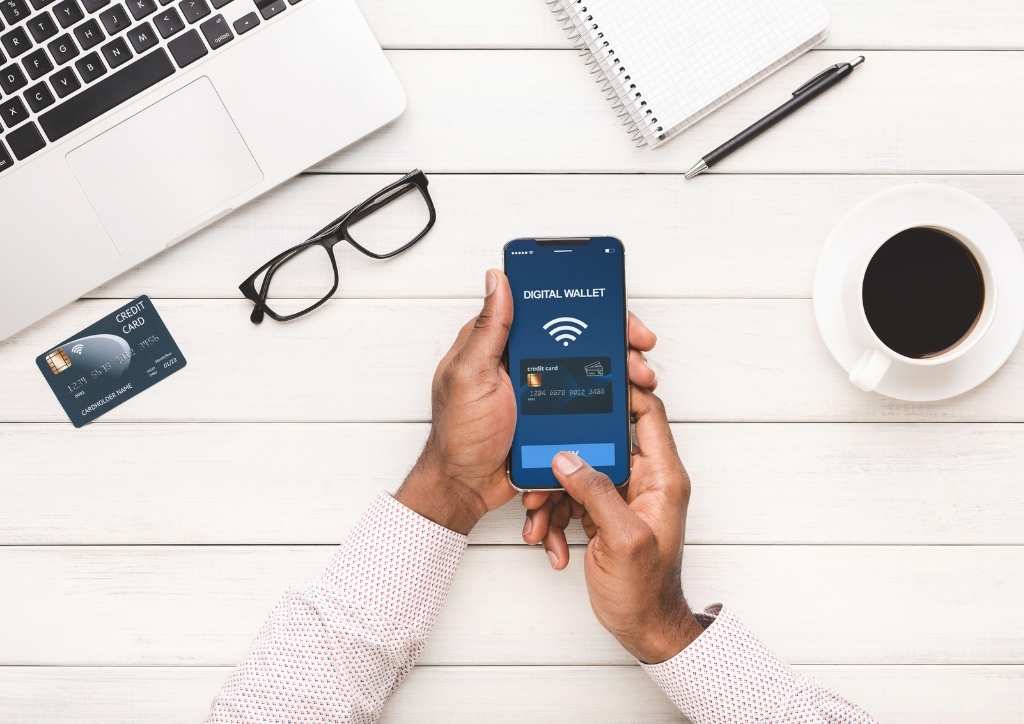NFTs or Non-fungible tokens are one-of-a-kind digital assets that represent unique ownerships. As its name implies, it is a kind of cryptocurrency that cannot be copied or reproduced. Instead, they can be sold for their original value. However, many scammers are active on several platforms waiting for you to slip up and fall into their traps. This is why we have brought a complete study to let people know how to spot fake NFT and ensure that at least our audience stays safe from the curse of scammers.
Read also: How Do I Know Which NFT to Buy in 2022?
How to Spot Fake NFT Artists
There are several ways you can spot a fake NFT. some of them are as follows:
Fake NFT Websites
The internet is flooded with plenty of marketplaces that claim to be the best platforms to buy or sell NFTs. But before investing with any of these places, analyze the site for its credibility. There are a lot of websites that are faking themselves as legitimate. Not only that they can steal away all of your credentials. What scammers do mostly to trap users is asking them to speed phrase their Ethereum wallet for stealing your assets.
To remain safe against scam or hack, prefer the following websites to avail legitimate NFTs:
NFTs for Art
- Foundation
- Rarible
- Nifty Gateway
- Super Rare
- Mintable
- Zora
- OpenSea
- Solanart
- SolSea
NFTs for Sports
- Sorare
- NBA Top Shot
NFTs for Gaming
- Street Fighter
- Treasureland
- Myth.Market
- Axie Infinity
NFTs for Digital Real Estate
- Decentraland
NFTs for Tweets
- Valuables

How to Spot Fake NFT Projects
If you want to know how to spot fake NFT projects, stay alert and spot fake customer service or technical support that can trap you to accept their offers leading you to a loss.
Read also: Upcoming NFTs with Passive Income in 2022
Fake Technical Support
- Via Discord
If you encounter some technical problems then do not rely on fake technical help offered by scammers on Discord who claims to be an employee of OpenSea. They may ask you to reveal your screen to them so that they can record your crypto credentials by visiting your wallet and taking screenshots of your speed phrase or QR code. Moreover, they may even ask you to click the link directing you to a fake OpenSea website where they can fool you into filling in your credential details.
- Via Email
Scammers can send you fake security alert emails by impersonating MetaMask. They emotionally trap you by saying that your MetaMask wallet might get suspended for some security issues. They will further force you to click on an implanted link in the email to verify your account and retrieve your wallet. Or they can lead you to a fake MetaMask wallet website through Phishing. Avoid adding your details to a fake website because it will become entirely impossible to retrieve your account because it is backed through decentralized technology.
Fake Offers
Scammers can impersonate famous NFT trading platforms by sending fake emails to the users claiming that someone wants to purchase their NFT further wanting you to click on an implanted button. This method is usually known as Phishing which leads the users to the fake page that will ask you to link your wallet and submit your seed phrase/recovery phrase. This way scammers can record your data and steal your possessions.
Rug Pull Scams
Rug pull scams often happen in fake NFT projects. One example is the Squid campaign that offered people digital tokens for the top-ranked Netflix series Squid Game. when the prices increased it resulted in a scam because the NFTs were not able to circulate because they can not be resold. Other examples include romance scammers who trap and lead users to fake projects asking them to invest their money.
Fake Giveaways
Scammers can trap you in their fake giveaway campaigns by posing as employees of famous NFT trading platforms. They will contact you through social media platforms like Discord or Telegram) and ask you to sign up or connect your MetaMask wallet to steal your credentials will be stolen.
How to Spot Fake NFT on OpenSea
Besides being the largest NFT marketplace, it is also an open marketplace where scammers can easily create and list fake collections to trap investors and steal their money. To avoid being scammed on OpenSea, consider and try the following methods:
Read also: How to Promote Your NFT on OpenSea
1. Buy from Verified Collections
Always invest in NFTs from verified collections that have been approved by OpenSea itself. This way you can avoid being scammed. To check if they are verified, find the ‘Verified’ badge in rankings, search results, and on the pages where they are listed. You may even check the confirmation on hover as well.
2. Buy from Verified Creators
In addition to verifying collections, you also need to check the verification of creators on the OpenSea marketplace. The platform itself verifies creators to ensure people about its validity. For example, the Encryptas collection by CypherCHK hasn’t yet been verified presumably because of lacking sales volume, while the creator has been verified. So always look out for verified creators along with verified collections.
3. Follow OpenSea Links Directly from the Trusted Source
To confirm the project is credible or not visit the link provided by the creators instead of searching the NFT collections on the OpenSea. To find the links, visit the website where the project is posted or visit the Discord server of the creators where the projects are posted under the channel named ‘official links’.
4. Learn to Spot a Scam on OpenSea
If you want to know How to Spot Fake NFT on OpenSea, then consider the below points.
The fake NFTs share some common features that we have listed below. Try considering them before you become a fool:
- Small Collection Size
Most scammers find it hard to meet the number of collections real creators possess. So check their amount before investing in them.
- Low Prices
Scammers usually trap people into buying NFTs whose value is much different and enticing than the real. They are usually paired with some good deals making people want them.
- Low or No Sales Volume
As compared to the original NFTs, fake collections usually have lower sales volume. The reason lies behind their unusual lower prices since many people know that an NFT is usually much expensive than them.
- Different Currency
Scam collections often use the Polygon networks to create their NFTs. Their prices are represented by a purple Ethereum symbol saying ‘ETH on Polygon’.
- No NFT Description or Properties Mentioned
Scammers do not devote extra effort to listing the features and properties of their collection. The fake collections are usually placed without a proper description. You can check for them before investing. If you cannot find a proper description avoid investing your money in it.
- Observe the Wallet Addresses to Identify a Possible Scam
Most scammers often buy their own creations to increase sales and overall stats of the respective art piece. This can be observed by monitoring the collectors’ addresses on a platform. If a majority of the art pieces of a specific artist are bought by identical wallet addresses, this is a red flag and you should avoid getting involved in such a project.
5. Avoid Things that has been sent to you for Free
Some scammers send free NFTs to people who if uses them can fall in danger. OpenSea directs such scam messages to a hidden tab where they will remain untouched.
How to Spot Fake NFT on Solana NFT Platforms
If you know how to spot fake NFT then consider a recent incident. It can say much about how scammers can fool you.
Recently, a fake NFT artist scammed Solana users by offering 2000 NFTs presale that was worth 0.5 SOL each. The NFTs were shaped as 3D busts and were named collectively Iconics. The project was promoted through Discord. It was reported that the original NFTs were stolen from an English artist aged 27. This scam affected nearly 2000 people and the loss in total was worth 140,000 dollars. However, after the purchase what users got was entirely different. They received a black image with different emojis.
The best part about trading NFTs or any cryptocurrency on an exchange is that you can monitor the real-time stats of the owners and judge the authenticity of an NFT. Recently, it was discovered that you can create an automated system that will allow you to switch between multiple wallets while placing bids or purchasing digital assets on a specific platform. This allows the scammers to stay safe from being caught. However, thanks to Solanart’s (Solana’s NFT Platform) activity monitor, you can easily find a pattern in the activity log and identify the anomalies. Same can be done on other NFT marketplaces too.
Hence, the NFT users who got exploited were left in extreme shock that has also affected many other investors as well. Considering the scam, we should always look for the validation of the collections, their creators, selling websites, and marketing channels carefully before investing in any of the NFT projects.
How do I Know if My NFT is Real?
The authentication of the artworks must be checked and verified before an investor proceed to purchase them. Below are some tips to make sure if the NFT is real or not:
- If an NFT is listed on multiple sites it means that the project is part of some fraudulent activity
- Go through the social media handles of the artists to see if they are fake or not. Check their profiles to see if they have posted any listings.
- If you notice a cheaper value for the auction or buy now price and you think that the NFT must have some greater value than the prices shown then it can mean that there is a red flag for some scam.
- To check if the NFT is real upload the image on the Google search engine bar or paste the link if you are using the phone. This method is called reverse-search that helps you to identify if the image has been there already on the internet.
Conclusion
The recent wave of scams in the NFT space has made a lot of people conscious and indecisive regarding their NFT purchases. The losses have not only affected the victims but have also made a distinctive impact on new investors who want to purchase NFTs. If you want to escape such scams and invest safely then we hope this article has been helpful for viewers to know how to spot fake NFT.




